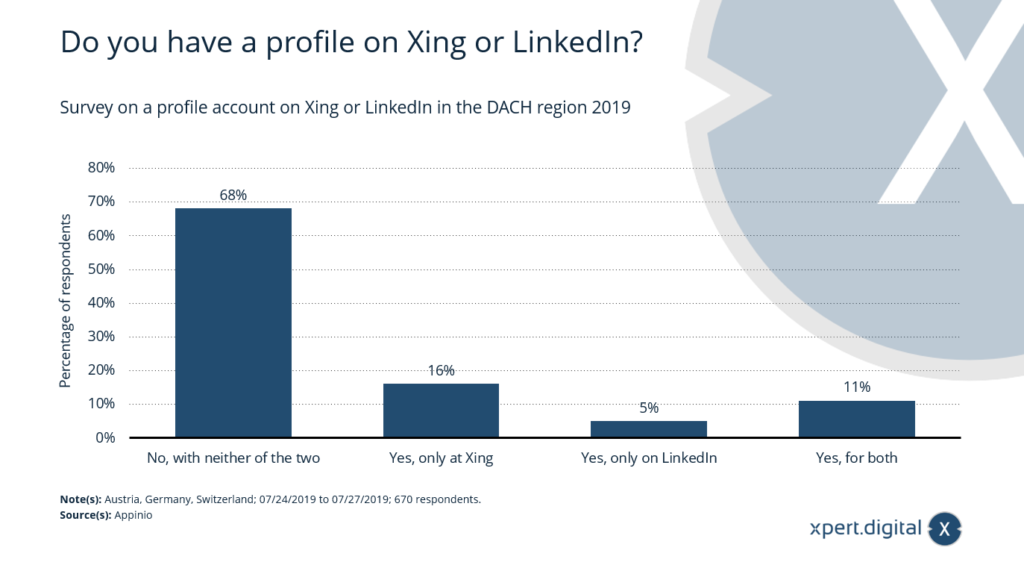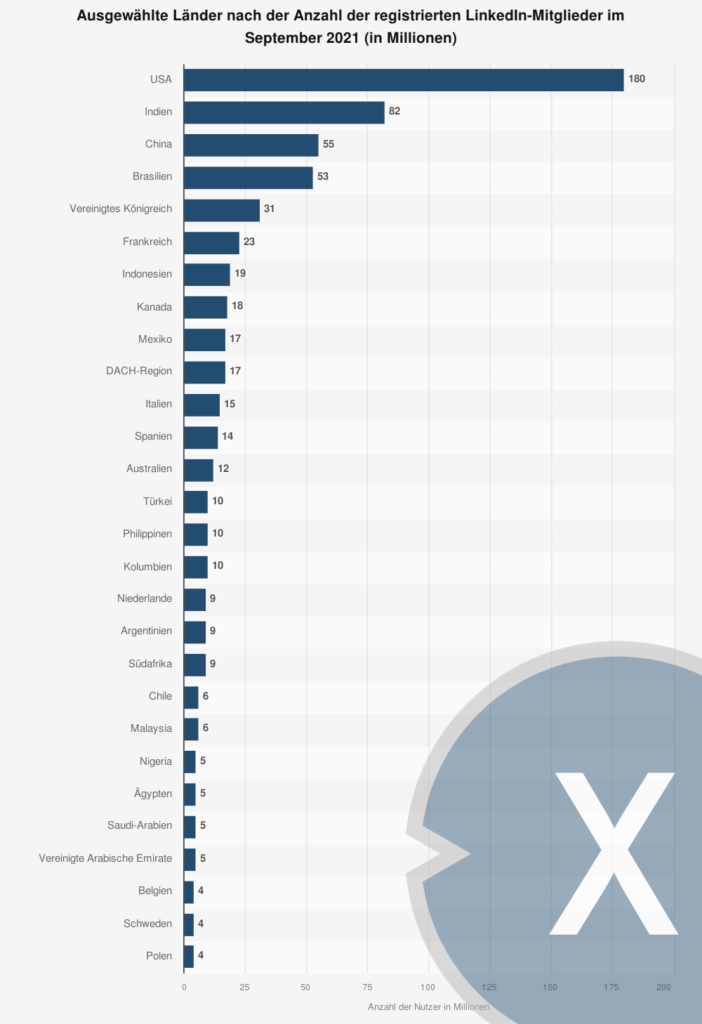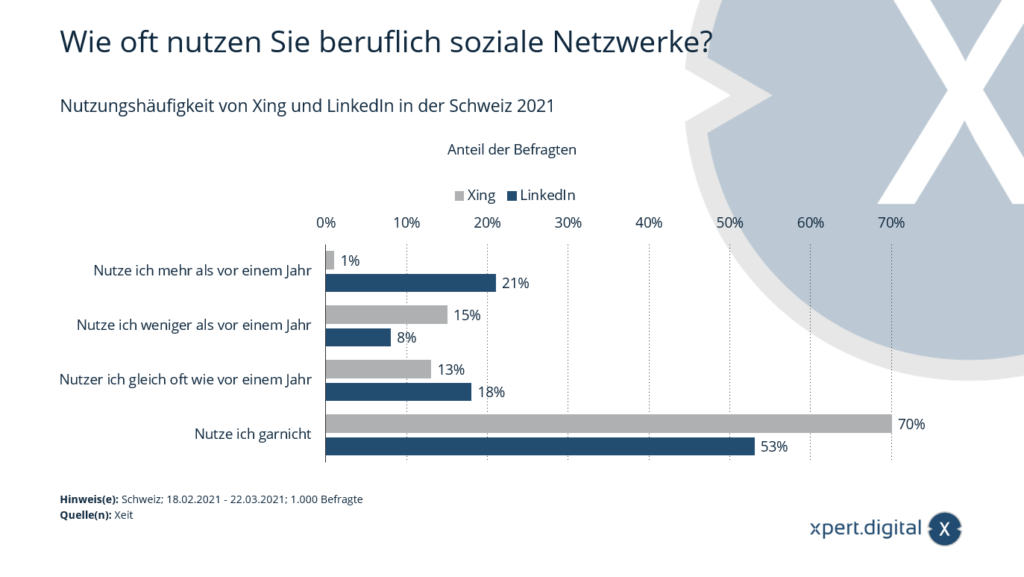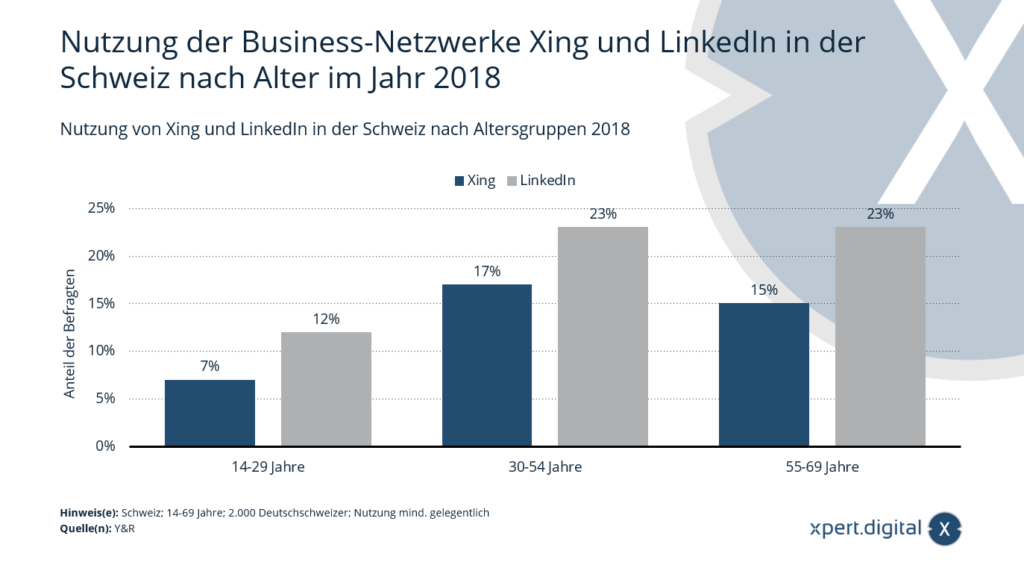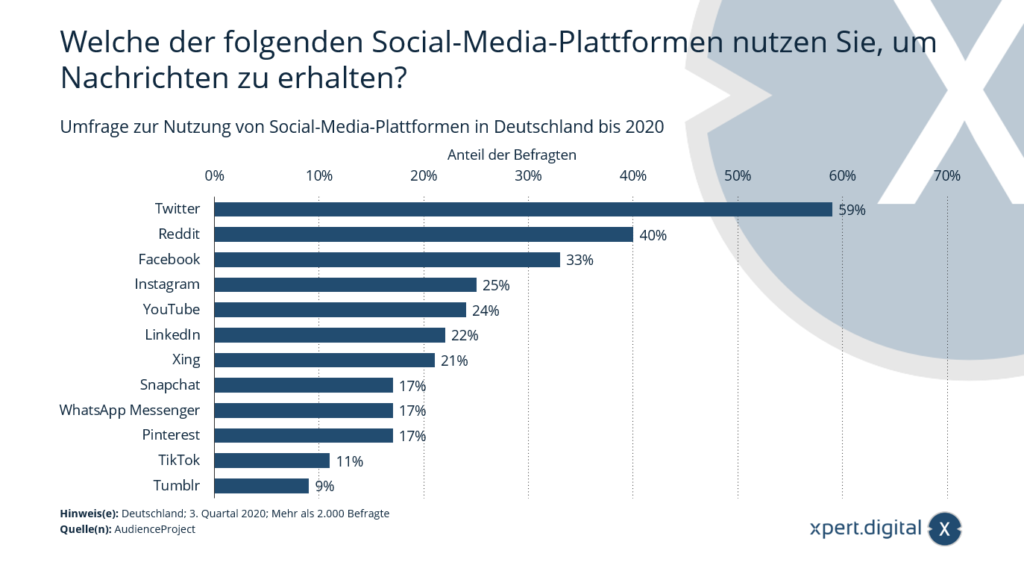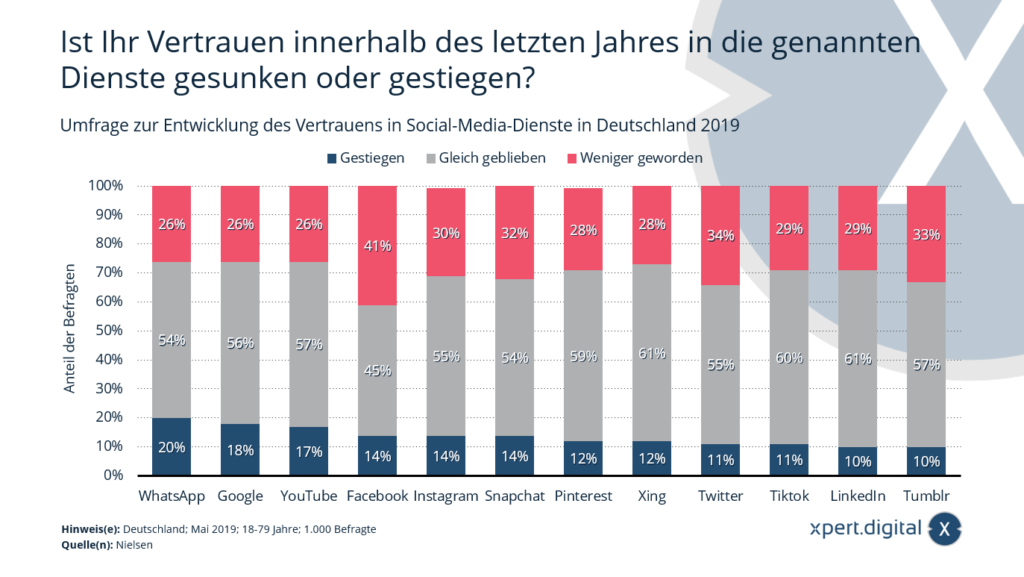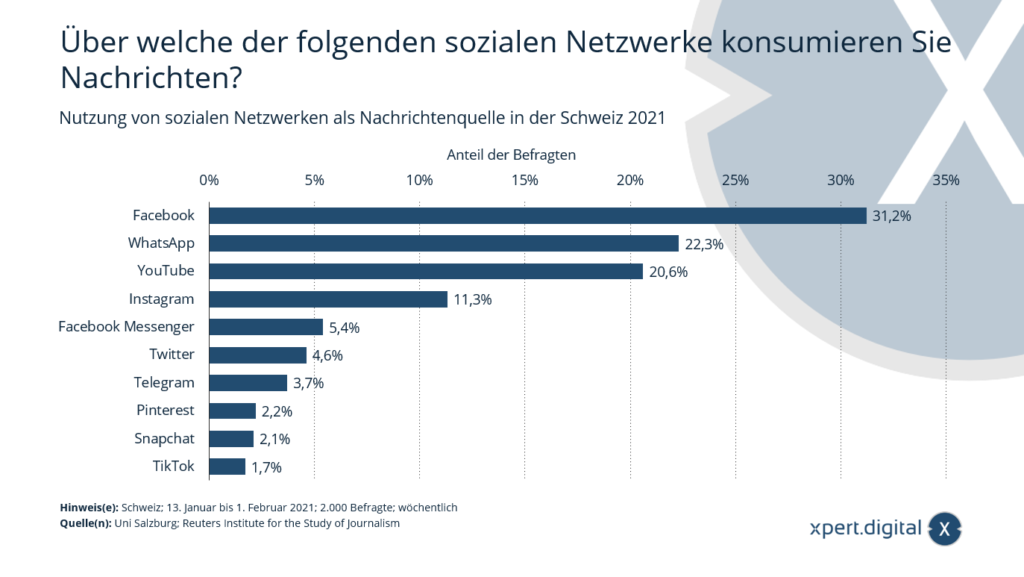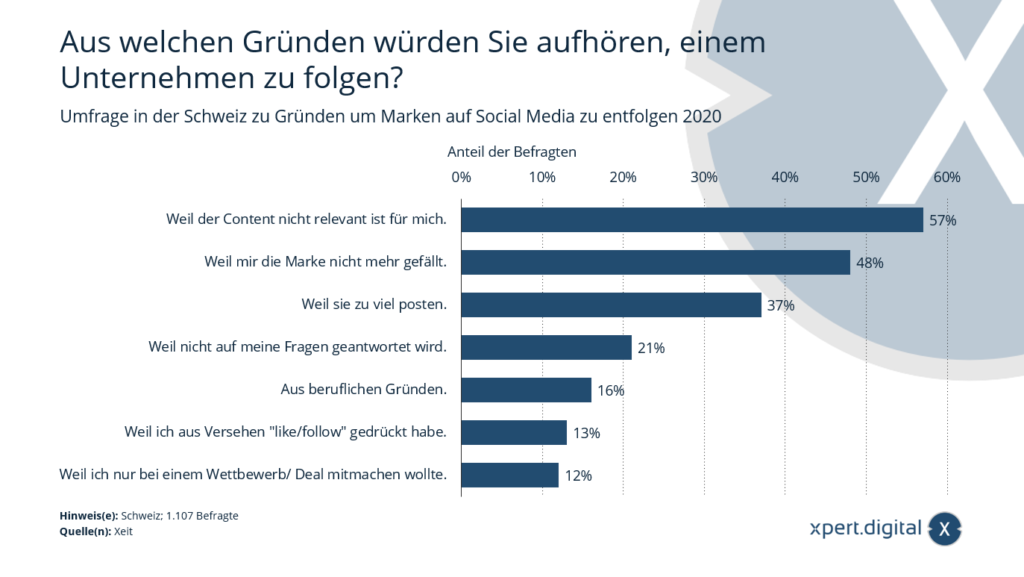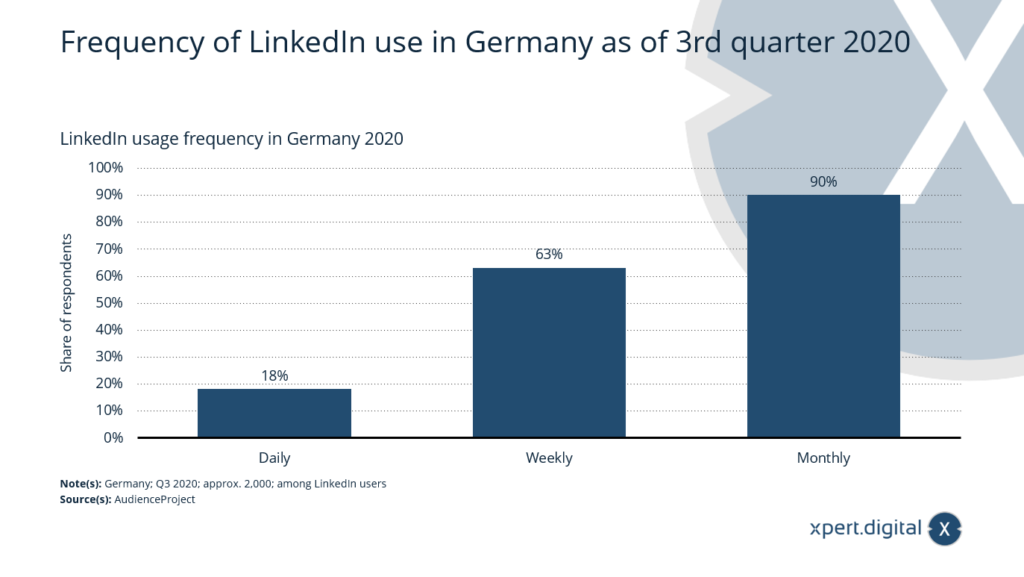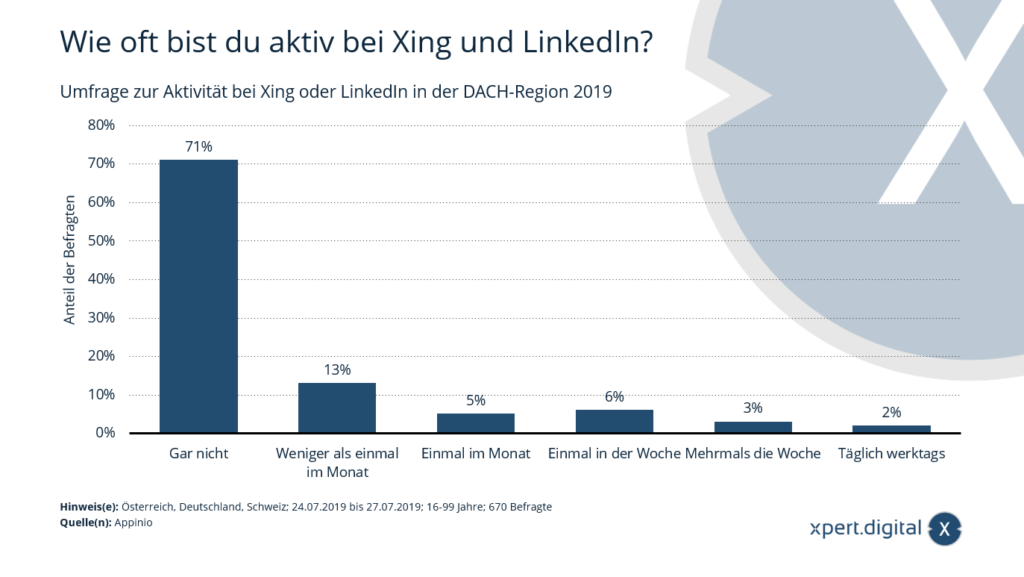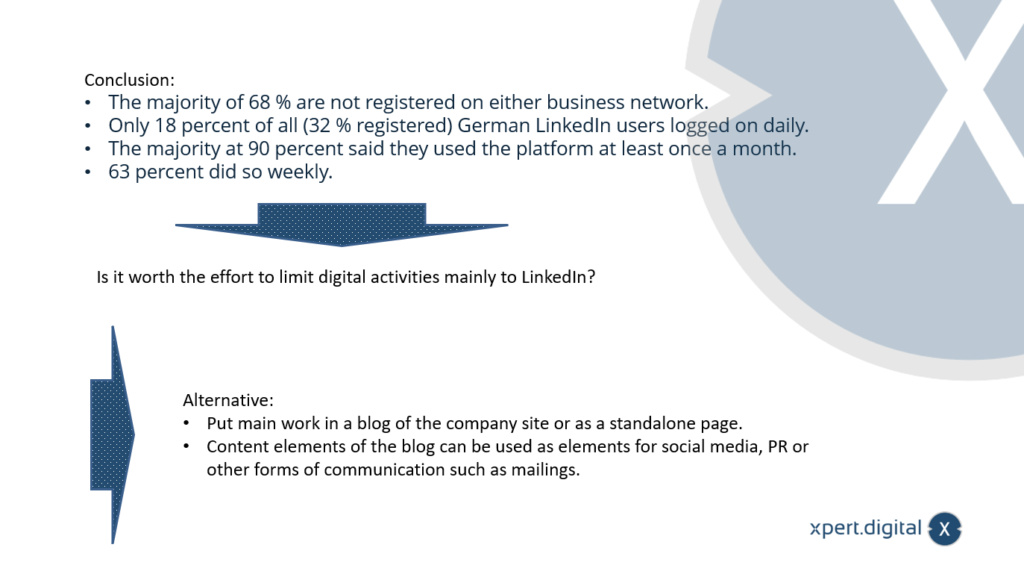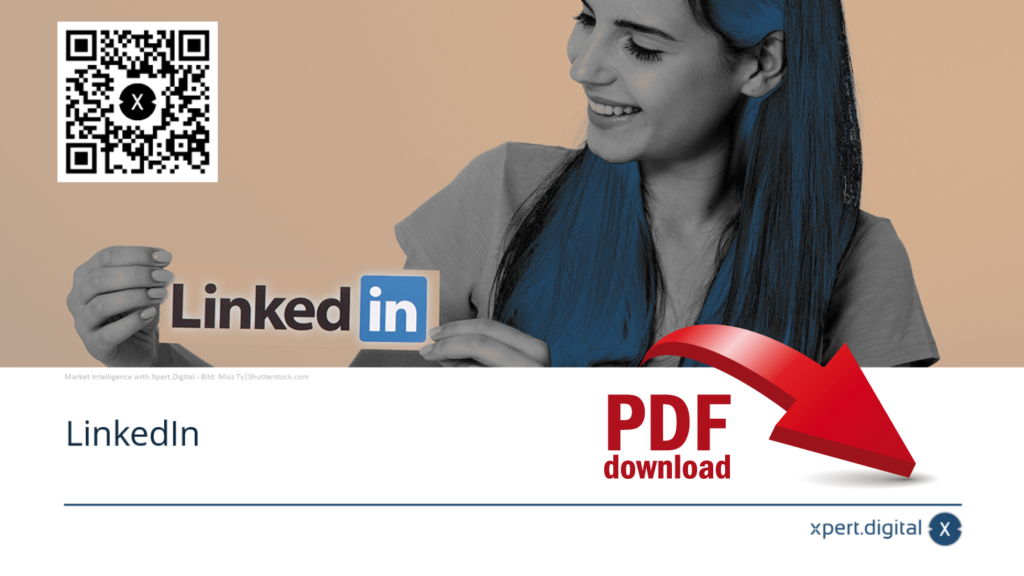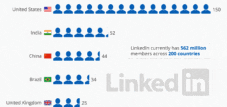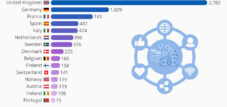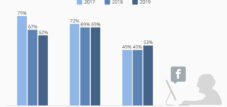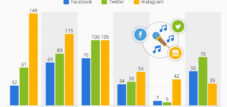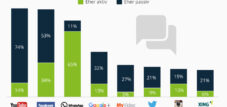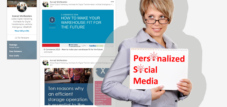Decision support: Quo Vadis LinkedIn? – Microsoft’s business social media platform under criticism
Language selection 📢
Published on: January 2, 2022 / Update from: January 2, 2022 - Author: Konrad Wolfenstein

Quo Vadis LinkedIn? – Microsoft’s business social media platform under criticism – Image: Miss Ty|Shutterstock.com
In everyday life, “Quo Vadis” likes to be in the sense of “Where should that still lead?” or "How should that go on?" used. I have asked the question many times recently and have now decided to cancel my premium account with LinkedIn like at XING. The decisive factor was the development at LinkedIn. I haven't been active at Xing for a long time.
You can't say across the board that the social media business is dead or anything like that. That would be a claim and headline that is not correct and is only intended to attract attention with a specific intention.
Suitable for:
Every initial situation is different and every situation therefore requires individual consideration and evaluation. As an almost one-man show with a corresponding network, it is particularly important to me to maintain my existing business relationships and provide information about news. Acquiring new customers is not necessary for me personally because I am already working at my limit. Lead acquisition for my business customers is a key focus for me. The focus here is on the areas of logistics/intralogistics, mechanical engineering, photovoltaics, extended reality and financial consulting.
The area of business social media remains interesting to me for interesting contact initiation and synergistic business contacts. Unfortunately, the situation is literally getting worse here. In the last few years, I have had an increasing number of supposed contact initiations via paid InMail, which are actually nothing more than sales intentions. Almost all sales are driven and then they usually don't bother to respond individually to my profile or my business interests.
So advertising in-mails are sent out in bulk with the aim of getting 2 or 3 interested parties to respond in the end. Does this have anything to do with the sales strategy since LinkedIn moved to Microsoft under new ownership? New goals at the expense of quality? At the end of July 2020, LinkedIn announced the layoffs of around 1,000 employees. The trigger for the layoffs was the coronavirus pandemic and the associated economic downturn.
If LinkedIn is to be converted into a business sales funnel, that's okay. We are a free country. However, if I hardly attract any new, interesting contacts through my many posts (posts) and even barely reach my existing contacts because an increasing number of them hardly use LinkedIn anymore, then I don't need a paid premium account for this. The LinkedIn Sales Navigator tool has also proven to be bulky and useless compared to the alternatives, which are not cheaper but more effective.
For my evaluation, I put together some numbers and data, which can be found here
A big influence on my decision is the difference between registered LinkedIn users, their activities and those who are not even logged into LinkedIn.
In January 2021, LinkedIn said it had 16 million users in Germany, Austria and Switzerland.
In a survey, only 5% of respondents said they were registered on LinkedIn. At least 16% confirmed that they had an account on both LinkedIn and Xing. 68% said they were not logged in to either LinkedIn or Xing.
This awakens the digital silverback instinct in me: How and where can I reach others?
Suitable for:
It is also interesting that the many posts that you post yourself and those that you receive from others suggest a moving business community. If you look at the actual activity figures of LinkedIn users, I get a more differentiated picture. According to a survey in the third quarter of 2020, 90% of users said they use LinkedIn at least (or only) once a month.
I now only have the number of users from the roof region, that's 16 million. In the end, there is an approximate number of 1.6 million users who use LinkedIn at least (or only) once a month. Well, about 6 million use it every week and almost 3 million a day. As I said, the numbers can be seen as guidelines. It can also be more or less. But you get an approximate idea. For comparison: WhatsApp has 58 million daily users. But you are not (yet) penetrated (yet) with advertising or comparable in -mails, but can exchange ideas with the self -made contacts. And here I do not have to post content regularly to keep my reach, nor is that this range is artificially minimized by supposedly “intelligent” algorithms (so that I can then “switch” advertising ads and “may” to increase my reach again).
First of all, social media is a business. The term “social” is irritating because only the synonym “socially” fits here: medium for society. Socially in the extended sense for “non -profit”, “helpful” or “merciful” do not fit here in this context and tough business. But always vibrate and convey a kind of social component that does not exist in the world of payment ads, among other things.
Suitable for:
If you want reach, you have to pay for it or create an interesting form of reach yourself that attracts interested parties. But it doesn't come for free either. That's work, especially in the area of content development.
Survey: Do you have a profile on Xing or LinkedIn?
To stay in contact professionally, the two leading business networks Xing and LinkedIn offer various options for digital interaction. As part of an Appinio survey (digital market research) from July 2019, around eleven percent of respondents from the DACH region stated that they were registered with both portals. However, the majority of those surveyed are not registered on either job network.
Survey on a profile account on Xing or LinkedIn in the DACH region 2019
No, on neither – 68%
Yes, only on Xing – 16%
Yes, only on LinkedIn – 5%
Yes, on both – 11%
Survey in Germany, Austria and Switzerland. Number of respondents: 670.
Selected countries by the number of registered LinkedIn members in September 2021
In September 2021, most LinkedIn members were counted in the USA. The number of registered members there was 180 million. India and China followed far behind with 82 and 55 million registered members, respectively. The number of LinkedIn members in the DACH region was put at 17 million.
Information about LinkedIn
LinkedIn is a social network for maintaining professional contacts, which was founded in 2003 and has been part of Microsoft since December 2016. Users have the choice between a free basic account and a paid premium account, which offers extended functions.
LinkedIn's biggest competitor in the DACH region is the career network Xing. The number of members of the Xing platform in the DACH region was around 19 million in 2020. New Work SE (formerly XING SE) - the company behind the Xing career network - had sales of around 276.5 million euros in 2020 and reported a profit of 26.1 million euros.
Number of registered members of LinkedIn by country
- USA – 180 million
- India – 82 million
- China – 55 million
- Brazil – 53 million
- United Kingdom – 31 million
- France – 23 million
- Indonesia – 19 million
- Canada – 18 million
- Mexico – 17 million
- DACH region – 17 million
- Italy – 15 million
- Spain – 14 million
- Australia – 12 million
- Türkiye – 10 million
- Philippines – 10 million
- Colombia – 10 million
- Netherlands – 9 million
- Argentina – 9 million
- South Africa – 9 million
- Chile – 6 million
- Malaysia – 6 million
- Nigeria – 5 million
- Egypt – 5 million
- Saudi Arabia – 5 million
- United Arab Emirates – 5 million
- Belgium – 4 million
- Sweden – 4 million
- Poland – 4 million
LinkedIn & Xing: How often do you use social networks for work?
According to a survey by the online marketing & social media marketing agency xeit gmbh in spring 2021, 21 percent of respondents from Switzerland use LinkedIn more than a year ago. However, only one percent of those surveyed said they used the Xing business network more than in the previous year.
Frequency of use of Xing and LinkedIn in Switzerland 2021
- I use more than a year ago – 21%
- I use less than a year ago – 8%
- I use it as often as I did a year ago – 18%
- I don’t use it at all – 53%
- Do I use more than a year ago – 1%
- I use less than a year ago – 15%
- I use it as often as I did a year ago – 13%
- I don’t use it at all – 70%
What do you expect from a brand/company on a social network?
The statistics based on data from the online marketing & social media marketing agency xeit gmbh show the results of a survey in Switzerland on expectations of companies in social media in 2020. 44 percent of those surveyed expect posting from a company's social media presence entertaining posts.
Survey in Switzerland on expectations of companies in social media 2020
- Information about the company/brand – 62%
- Information on topics affecting the company/brand – 56%
- Entertaining posts – 44%
- Services – 31%
- Polls – 21%
- Competitions – 18%
- Other – 2%
Use of the business networks Xing and LinkedIn in Switzerland by age
Almost one in four Swiss people between the ages of 30 and 69 uses LinkedIn. Among digital natives - aged 14 to 29 - around 12 percent of those surveyed said they visit the business platform at least occasionally, and seven percent of teenagers and young adults are registered with the German career platform Xing.
Xing vs LinkedIn
In Switzerland, LinkedIn (1.2 million) has around a quarter more users than Xing (0.9 million). However, if you look at the entire DACH region, Xing leads with 17 million members compared to LinkedIn (12 million). The decisive factor for this is probably that the career network Xing is based in Hamburg and is therefore more popular in Germany than its American competitor. LinkedIn, market leader in the business networks segment, says it is used in over 200 countries worldwide, while Xing focuses on German-speaking countries.
Use of companies and organizations
Business platforms help companies communicate with customers and business partners and support recruiting. In August 2018, 80 percent of the largest Swiss companies and organizations had one or more profiles on LinkedIn, and 58 percent used Xing.
Use of Xing and LinkedIn in Switzerland by age group 2018
- 14-29 years – 12%
- 30-54 years – 23%
- 55-69 years – 23%
- 14-29 years – 7%
- 30-54 years – 17%
- 55-69 years – 15%
Which of the following social media platforms do you use to get news?
According to a study by the market research company AudienceProject, around 59 percent of respondents in Germany said in the third quarter of 2020 that they use Twitter to receive news. Meanwhile, around a third of those surveyed use Facebook for this.
Survey on the use of social media platforms in Germany by 2020
- Twitter – 59%
- Reddit – 40%
- Facebook – 33%
- Instagram – 25%
- YouTube – 24%
- LinkedIn – 22%
- Xing – 21%
- Snapchat – 17%
- WhatsApp Messenger – 17%
- Pinterest – 17%
- TikTok – 11%
- Tumblr – 9%
Has your trust in social media services decreased or increased over the last year?
As part of the survey, 41 percent of those surveyed said that their trust in Facebook had decreased over the past year. Trust in the messenger service WhatsApp, which also belongs to Facebook, has increased for 20 percent of those surveyed.
Survey on the development of trust in social media services in Germany 2019
Gone up
- WhatsApp – 20%
- Google – 18%
- YouTube – 17%
- Facebook – 14%
- Instagram – 14%
- Snapchat – 14%
- Pinterest – 12%
- Xing – 12%
- Twitter – 11%
- Tiktok – 11%
- LinkedIn – 10%
- Tumblr – 10%
Stayed the same
- WhatsApp – 54%
- Google – 56%
- YouTube – 57%
- Facebook – 45%
- Instagram – 55%
- Snapchat – 54%
- Pinterest – 59%
- Xing – 61%
- Twitter – 55%
- Tiktok – 60%
- LinkedIn – 61%
- Tumblr – 57%
Became less
- WhatsApp – 26%
- Google – 26%
- YouTube – 26%
- Facebook – 41%
- Instagram – 30%
- Snapchat – 32%
- Pinterest – 28%
- Xing – 28%
- Twitter – 34%
- Tiktok – 29%
- LinkedIn – 29%
- Tumblr – 33%
Which of the following social networks do you use to consume news?
According to the Reuters Institute's Digital News Report 2021, the most frequently used social media services when it comes to news consumption are Facebook (31.2 percent), WhatsApp (22.3 percent) and YouTube (20.6 percent). Over 11 percent of internet users surveyed said they read, watched, shared or discussed news via Instagram on a weekly basis.
This question was asked in the survey in the following wording: “Which of the following services did you use last week to search for, read, look at, share, or to discuss it if any? Please select all applicable answers. ”
Use of social networks as a news source in Switzerland 2021
- Facebook – 31.2%
- WhatsApp – 22.3%
- YouTube – 20.6%
- Instagram – 11.3%
- Facebook Messenger – 5.4%
- Twitter – 4.6%
- Telegram – 3.7%
- Pinterest – 2.2%
- Snapchat – 2.1%
- TikTok – 1.7%
What reasons would you stop following a company?
According to a survey by the online marketing & social media marketing agency xeit gmbh in spring 2020, irrelevant content is the main reason why many followers would say goodbye to a brand on social media. Around 48 percent of those surveyed would stop following a company because they no longer like the brand.
Survey in Switzerland on reasons to unfollow brands on social media 2020
- Because the content is not relevant to me – 57%
- Because I don’t like the brand anymore – 48%
- Because they post too much – 37%
- Because my questions are not answered – 21%
- For professional reasons – 16%
- Because I accidentally pressed “Like/Follow” - 13 %
- Because I only wanted to take part in a competition/deal – 12%
Frequency of LinkedIn use in Germany in the third quarter of 2020
Only 18 percent of all German LinkedIn users log in daily, according to a survey in the third quarter of 2020. The majority of 90 percent said they used the platform at least (or only) once a month, while 63 percent did so weekly.
LinkedIn usage frequency in Germany 2020
- Daily – 18%
- Weekly – 63%
- Monthly – 90%
How often are you active on Xing and LinkedIn?
To stay in contact professionally, the two leading business networks Xing and LinkedIn offer various options for digital interaction. In an Appinio survey from July 2019, around 13 percent of respondents from the DACH region said they were active on the two social networks less than once a month. The majority of those surveyed are not active at all.
Survey on activity on Xing or LinkedIn in the DACH region 2019
- Not at all – 71%
- Less than once a month – 13%
- Once a month – 5%
- Once a week – 6%
- Several times a week – 3%
- Daily on weekdays – 2%
A possible conclusion
- The majority of 68% of respondents are not registered in either business network.
- Only 18 percent of all (32% registered) German LinkedIn users logged in daily.
- The majority, namely 90 percent, said they use the LinkedIn platform at least (or only) once a month.
- 63 percent did this weekly (on LinkedIn).
Is it worth the effort to limit digital activities primarily to LinkedIn?
Everyone should decide on an answer on a case-by-case basis. Here on this page you will find some helpful information for your own individual assessment.
Alternative:
- Put the main work on a blog on the company website or as a standalone page.
- Content elements of the blog can be used as elements for social media, PR or other forms of communication such as mailings.
Decision support for the business social media platform LinkedIn: numbers and data
Important note: The PDF is password protected.
Please get in contact with me. Of course, the PDF is free of charge. Important note: The PDF is password protected. Please contact me. Of course the PDF is free of charge.
English version – To view the PDF, please click on the image below.
English Version – To view the PDF, please click on the image below.
Are you looking for technical and strategic advice for potential solutions? Xpert.Digital supports you!
I would be happy to serve as your personal advisor.
You can contact me by filling out the contact form below or simply call me on +49 89 89 674 804 (Munich) .
I'm looking forward to our joint project.
Xpert.Digital – Konrad Wolfenstein
Xpert.Digital is a hub for industry with a focus on digitalization, mechanical engineering, logistics/intralogistics and photovoltaics.
With our 360° business development solution, we support well-known companies from new business to after sales.
Market intelligence, smarketing, marketing automation, content development, PR, mail campaigns, personalized social media and lead nurturing are part of our digital tools.
You can find out more at: www.xpert.digital – www.xpert.solar – www.xpert.plus



